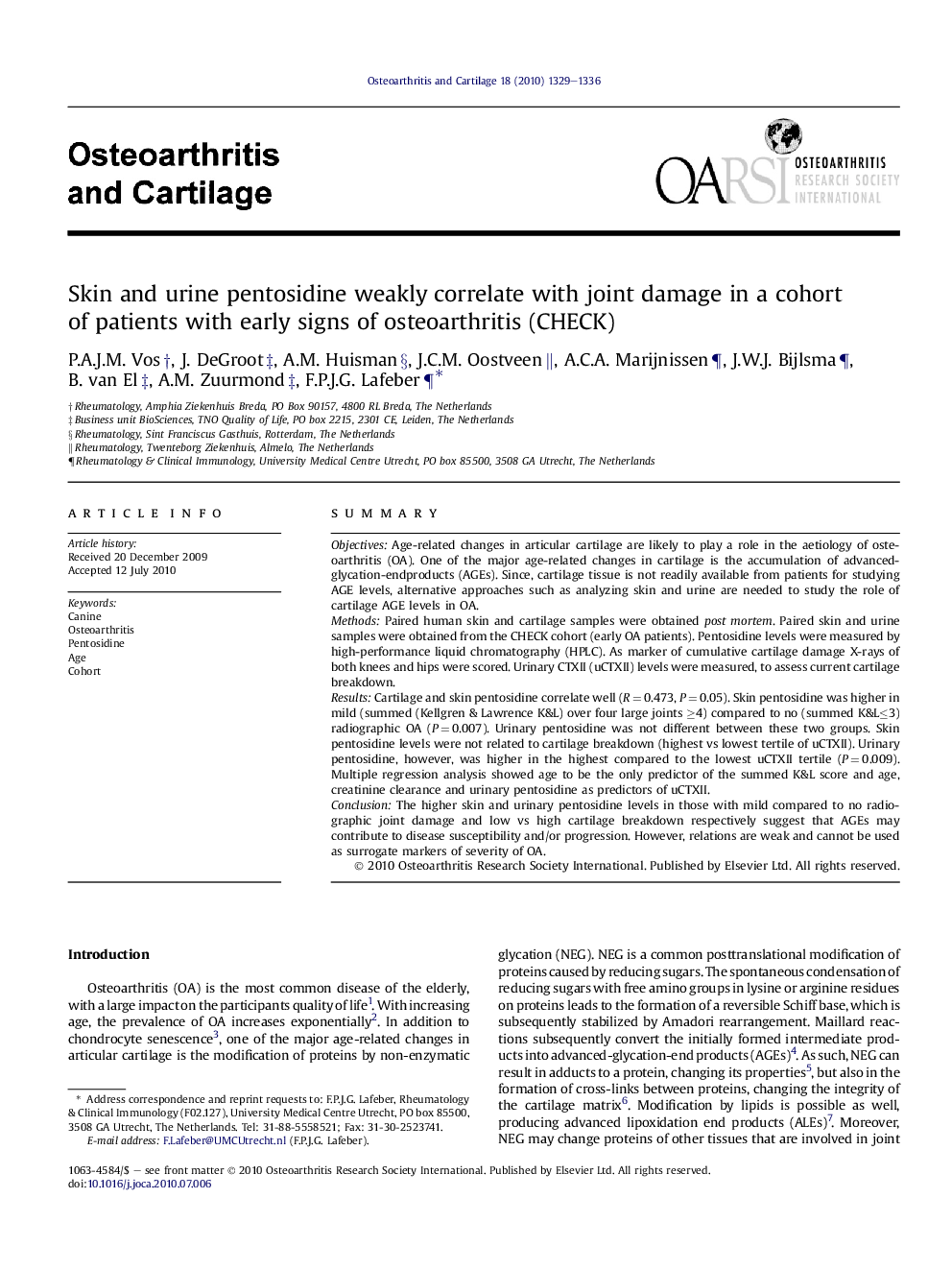| کد مقاله | کد نشریه | سال انتشار | مقاله انگلیسی | نسخه تمام متن |
|---|---|---|---|---|
| 3380305 | 1220205 | 2010 | 8 صفحه PDF | دانلود رایگان |

SummaryObjectivesAge-related changes in articular cartilage are likely to play a role in the aetiology of osteoarthritis (OA). One of the major age-related changes in cartilage is the accumulation of advanced-glycation-endproducts (AGEs). Since, cartilage tissue is not readily available from patients for studying AGE levels, alternative approaches such as analyzing skin and urine are needed to study the role of cartilage AGE levels in OA.MethodsPaired human skin and cartilage samples were obtained post mortem. Paired skin and urine samples were obtained from the CHECK cohort (early OA patients). Pentosidine levels were measured by high-performance liquid chromatography (HPLC). As marker of cumulative cartilage damage X-rays of both knees and hips were scored. Urinary CTXII (uCTXII) levels were measured, to assess current cartilage breakdown.ResultsCartilage and skin pentosidine correlate well (R = 0.473, P = 0.05). Skin pentosidine was higher in mild (summed (Kellgren & Lawrence K&L) over four large joints ≥4) compared to no (summed K&L≤3) radiographic OA (P = 0.007). Urinary pentosidine was not different between these two groups. Skin pentosidine levels were not related to cartilage breakdown (highest vs lowest tertile of uCTXII). Urinary pentosidine, however, was higher in the highest compared to the lowest uCTXII tertile (P = 0.009). Multiple regression analysis showed age to be the only predictor of the summed K&L score and age, creatinine clearance and urinary pentosidine as predictors of uCTXII.ConclusionThe higher skin and urinary pentosidine levels in those with mild compared to no radiographic joint damage and low vs high cartilage breakdown respectively suggest that AGEs may contribute to disease susceptibility and/or progression. However, relations are weak and cannot be used as surrogate markers of severity of OA.
Journal: Osteoarthritis and Cartilage - Volume 18, Issue 10, October 2010, Pages 1329–1336